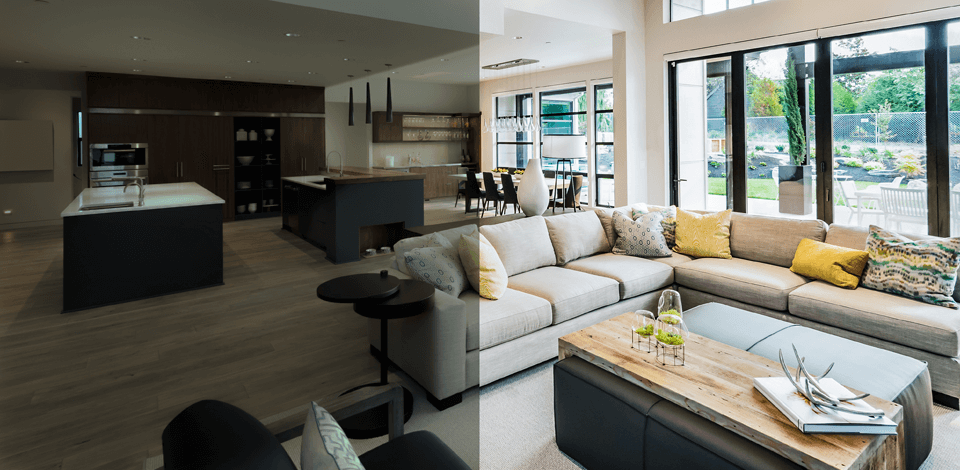
Depending on the settings, any real estate retoucher at FixThePhoto can make shadows deeper, tweak colors, highlight shadows, and add more light to emphasize the key selling points of a property.
Discovering how different contrasting styles impact textures and focal points allows photographers to fully transform the atmosphere in their photos and convey a specific feel.
If you want to compare low contrast vs high contrast face, think about a person with light skin, eyes, and hair and a person with a dark complexion, dark eyes and hair. The contrast between these people makes us notice different textures, shapes, and depths.
By experimenting with various degrees of brightness and colors, a photographer can achieve high contrast and take attention-grabbing photos with clearly defined light and dark areas. When using low contrast, a photographer can capture a photo with softer tones.
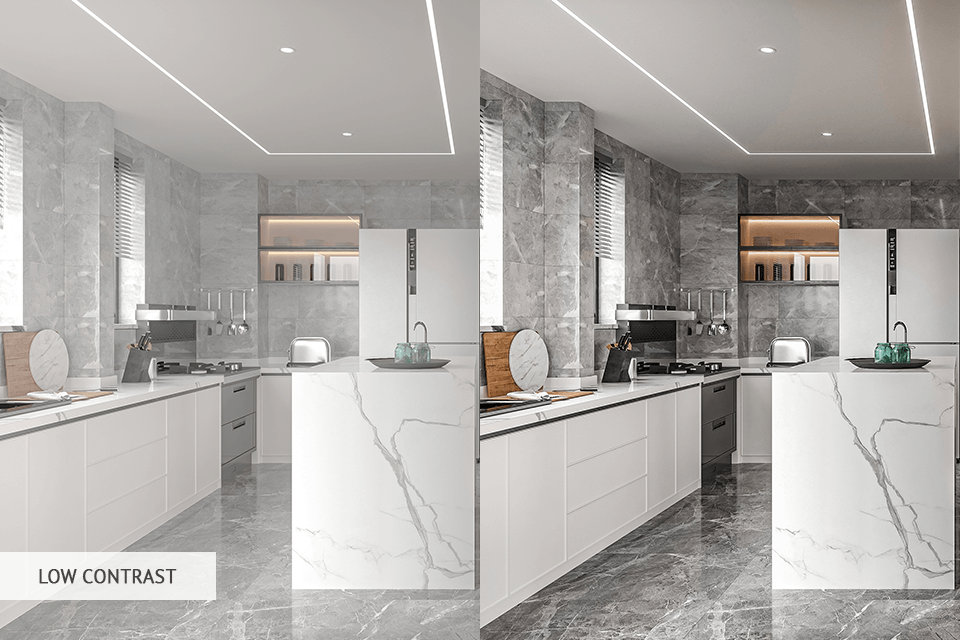
Photographers with a background in interior photography use lower contrast to achieve a subtle effect. They opt for a specific style known for its smooth tonal range. There is no sharp contrast between lights and shadows. The usage of gradients allows photographers to showcase a room in calm light.
Low contrast is suitable for pictures taken with natural or ambient lighting. It facilitates conveying a harmonious feel. It is suitable for:
✔️ Soothing atmosphere: low contrast creates a feeling of serene ambiance, making it suitable for situations when a photographer wants to capture a tranquil setting;
✔️ Smooth shadows: By avoiding harsh shadows, this method allows professionals to capture soft light and avoid excessive drama.
Avoid using low contrast in the following cases:
❌ Lack of noticeable detail: when using low contrast, you may notice that your pics look a bit flat so there won’t be any noticeable border between light and dark areas;
❌ Dynamic shots: if you want to capture photos with a strong dynamic feel, using low contrast won’t help you achieve this task. Besides, it may be impossible to emphasize architectural elements without using high contrast;
❌ Editing issues: you will have to spend a lot of time during post-processing to achieve the perfect balance between highlights and shadows without losing important details.
This method is best suited for those who want to get photos with a serene feel. However, if you need to take pictures with a strong visual impact, opt for high contrast instead.
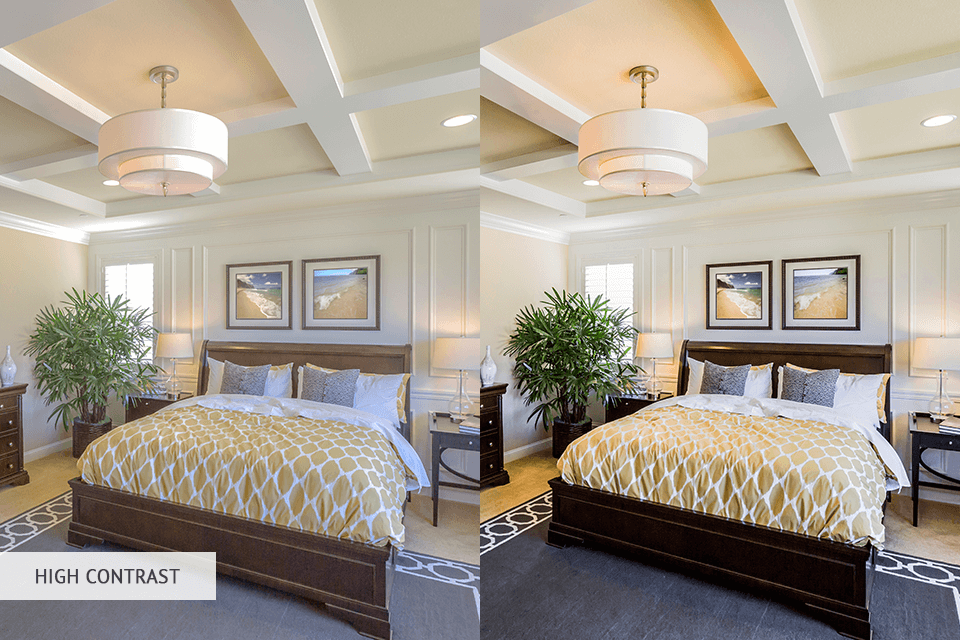
Photographers utilize increased contrast to emphasize the stark difference between highlights and shadows. When taking interior pics, you can boost contrast to achieve a bold and dynamic effect while simultaneously adding a dramatic feel to your pics.
High contrast allows you to emphasize shapes, highlight textures, and make architectural elements more attention-grabbing.
You may need to learn how to use real estate photography camera settings before using this method. To increase contrast, look for positive values exceeding 2 with a step ranging from 1 to 4. It will allow you to drive a viewer’s gaze to the main elements of the room.
For instance, you can emphasize some furniture pieces and design elements. When there is a noticeable contrast between light and shadows, it allows you to organize the space and give it some definition. For instance, when capturing sunlight coming through a window, you can add a sense of depth to your pics.
Using high contrast is recommended when a photographer needs to focus on textures or add a sense of movement to a photo. It’s suitable for capturing the textures of different materials, including brick, wood, and stone. You can use it to achieve the following goals:
✔️ Dramatic visual impact: high contrast helps a person to perceive the differences between light and shadow. It gives a sense of depth to interior photos. This effect allows a photographer to emphasize architectural features and design elements;
✔️ Strong focal points: this method grabs a viewer’s attention and makes a person notice the most important elements of the interior by making them stand out against dark or light backgrounds.
Do not use high contrast in the following cases:
❌ Overly harsh shadows: If you compare low contrast vs high contrast image, you may see that the former has noticeable shadows making it look unbalanced;
❌ Less natural lighting: high contrast makes natural light look artificial and prevents a photographer from capturing objects in a soft light;
❌ Only for some spaces: high contrast won’t help you capture minimalist designs and interiors with a soft feel.
High contrast is best suited for capturing interiors with bold colors and attention-grabbing elements. However, it might make your photos less warm and welcoming.
High contrast allows photographers to take impactful photos, while low contrast is more suitable for those who want to capture interiors in a welcoming light. Both methods are suitable for a variety of creative uses. By alternating between them, a photographer can tell an engaging story and capture viewers’ attention.
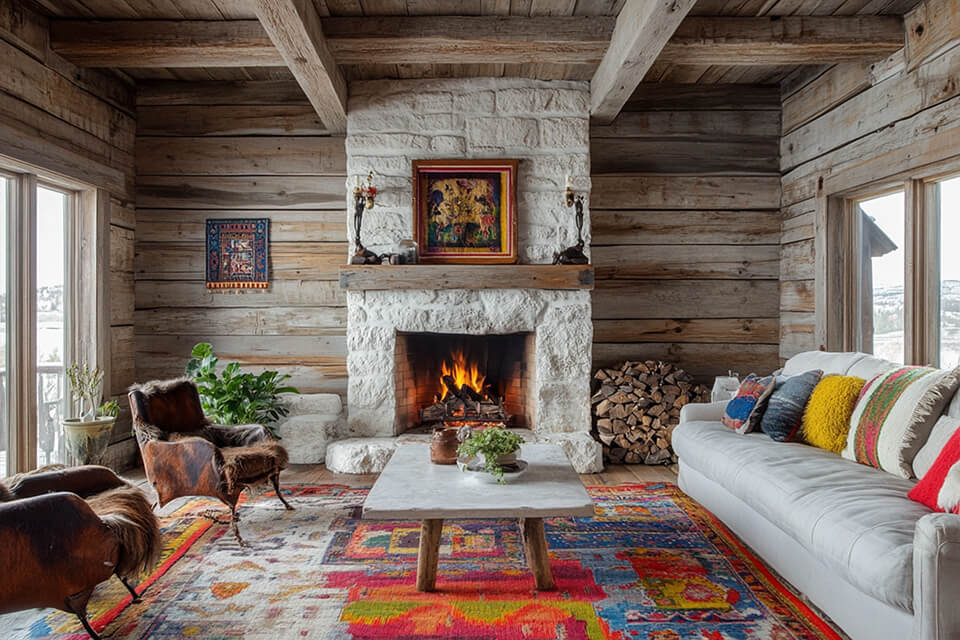
Comforting atmosphere. Sometimes photographers need to capture the atmosphere of warm ambiance. In photos, kitchens and other family spaces should look cozy and inviting. You can follow my kitchen photography tips and use low contrast to capture a harmonious atmosphere of such interiors in soft light.
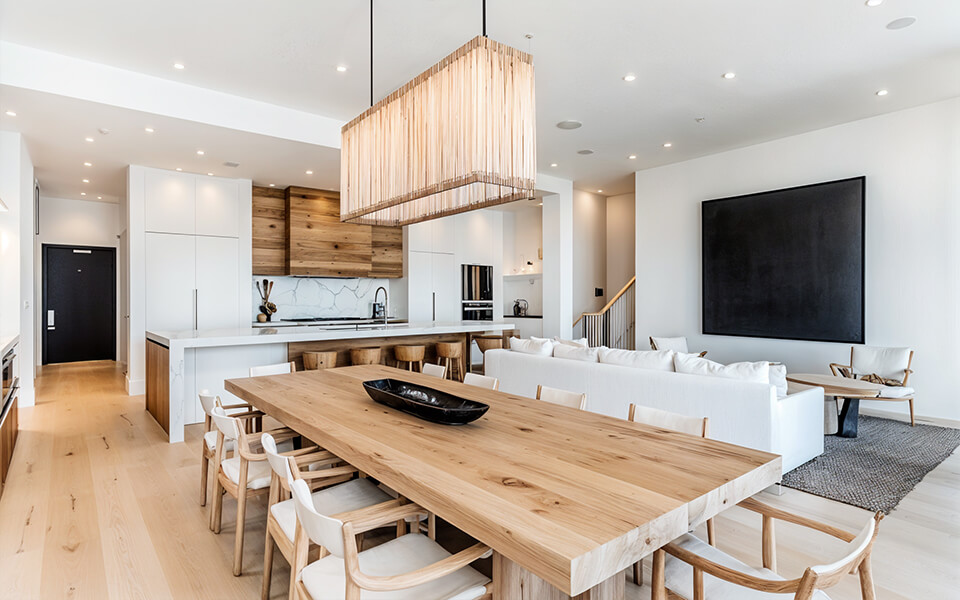
Minimalist interiors. Focusing on softer elements allows photographers to achieve consistency and capture a dreamy feel of Scandinavian interiors and minimalist designs with prevailing light tones and basic textures.
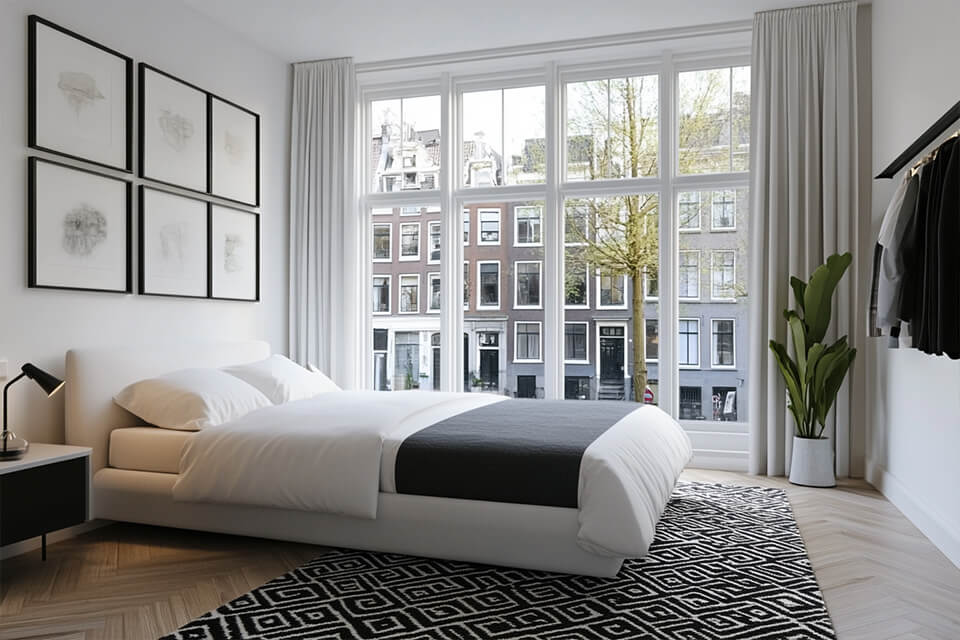
Delicate spaces. This contrast is perfect for capturing photos of bedrooms, lounges, and boudoirs in a more intimate light, as it allows you to emphasize pastel and light hues and capture the softness of materials.
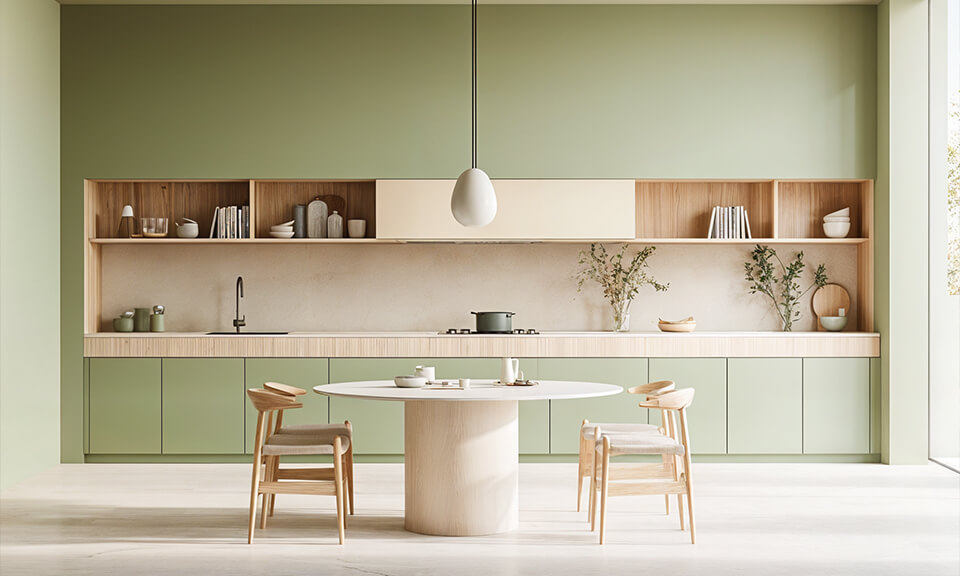
Modern interiors. When you need to capture modern or industrial interiors with many stark lines and bold textures like concrete or exposed brick, use a higher contrast to emphasize the important details in your photos and give them a dynamic feel.
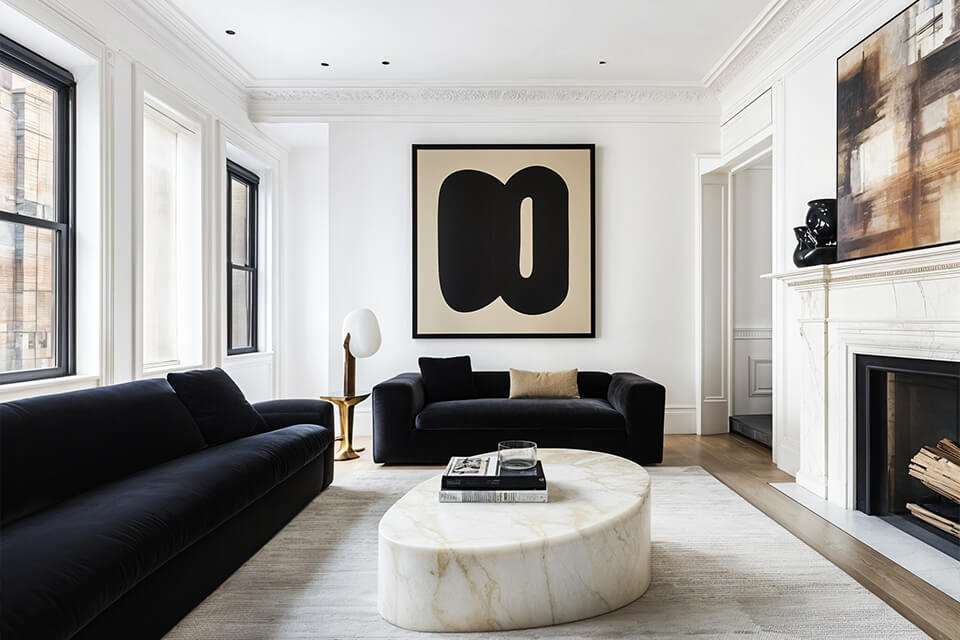
Black-and-white. When looking at high contrast vs low contrast black and white pics, you will realize that the former technique is more suitable for this genre. It’s advisable to use high contrast to add visual interest and a sense of depth by emphasizing different areas of the photos and juxtaposing them to achieve a better contrast.
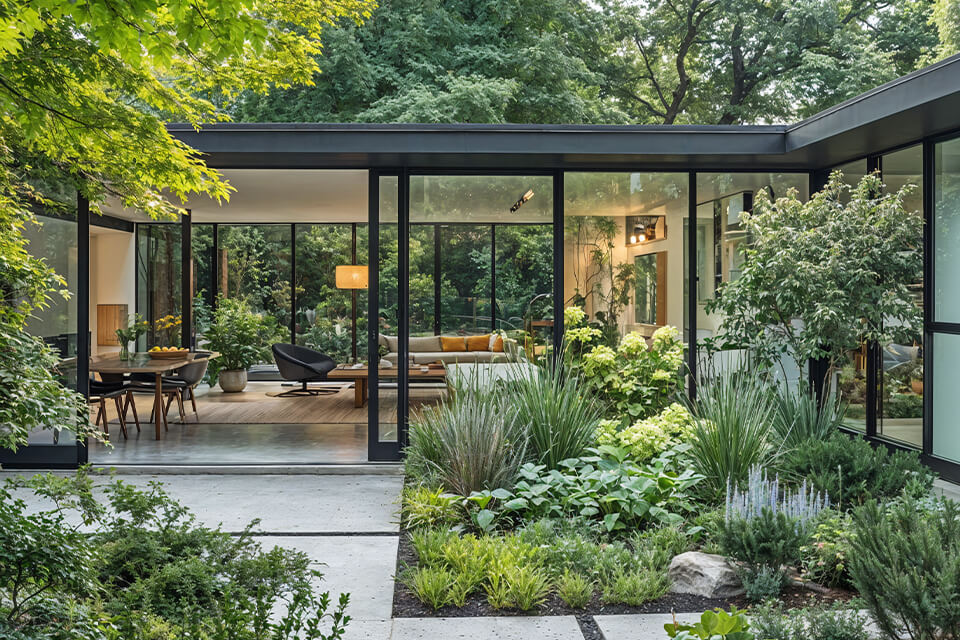
Landscape compositions. Whether you need to capture a winter garden, a porch, or a beautiful view outside a window, use higher contrast to add rich colors.
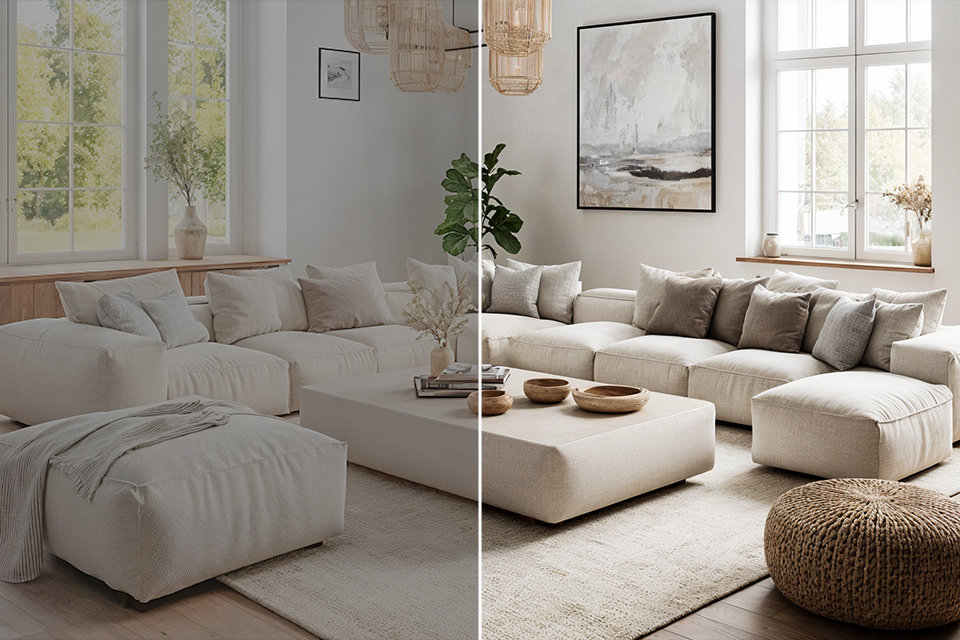
This low contrast vs high contrast comparison demonstrates that the choice between these interior photography settings depends on the result you want to achieve and the elements that you want to emphasize. To help you chose the right option, I will share some useful tips for photographers below. I use them when taking interior photos.
After comparing low contrast vs high contrast techniques, you will understand that the final decision rests only upon your preferences. You may decide to convey a feeling, recreate a specific style, and capture the atmosphere using one of these two options.
Be sure to master both methods to alternate between these two techniques and select the most suitable contrast for your interior shots to tell an engaging story.